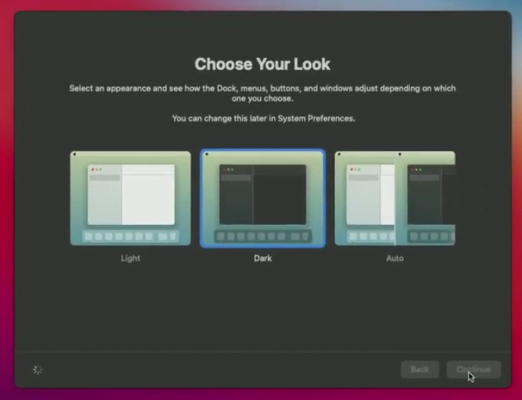

- #FACTORY RESET MACOS MOJAVE HOW TO#
- #FACTORY RESET MACOS MOJAVE MAC OS#
- #FACTORY RESET MACOS MOJAVE INSTALL#
- #FACTORY RESET MACOS MOJAVE PASSWORD#
- #FACTORY RESET MACOS MOJAVE MAC#
#FACTORY RESET MACOS MOJAVE MAC#
The Mac should be safely restarted, that is to say it should be done by selecting the appropriate restart menu, and not by forcing a shutdown by holding the power key. If something had crashed or a particular function was having trouble working, most times a restart will fix it. Restarting your computer boots the operating system again. If selling or giving your Mac to someone else, use the keyboard shortcut ⌘Q to quit the setup assistant and power your Mac down.As cliché as it sounds, it does have its merit. If keeping your Mac, continue on with the setup process. When the installation is complete you’ll see the welcome screen with the region selector.

#FACTORY RESET MACOS MOJAVE INSTALL#


Back on the main macOS Utilities window, click on Reinstall macOS.Click Erase (once complete, in the menu bar click Disk Utility → Quit Disk Utility to return to the macOS Utilities window).
#FACTORY RESET MACOS MOJAVE MAC OS#
Enter a name for the disk (Macintosh HD is the default on a new Mac), use Mac OS Extended (Journaled) for formatting, and GUID Partition Map for scheme or APFS, whatever is recommended by Disk Utility.Click Erase in the top area of the utility window.Select your startup disk in the sidebar of Disk Utility (click the top item like Apple SSD, not the volume name, Macintosh HD).Click Disk Utility in the Utilities window, then click Continue.Erase your startup disk (hard drive/solid state drive) When the process is complete, you’ll see the macOS Utilities window. Loading time for macOS Recovery will vary depending on your internet connection. ⌥⌘R (Option Command R) = Upgrade to the latest macOS that is compatible with your MacĪpple notes on its support page, “if you’re selling or giving away a Mac that is using OS X El Capitan or earlier, use Option-Command-R to make sure that the installation isn’t associated with your Apple ID.” This also installs the latest available software.⌘R (Command R) = Reinstall the latest macOS that was installed on your Mac, without upgrading to a later version.Press and hold the power button to turn it on and continue to hold it until you see the startup optionsįor Intel Macs, macOS Recovery will install a different version of macOS depending on the key combination you use when starting up your Mac (no installation discs or macOS loaded onto an external drive is needed). Hold down one of the following key combinations right after powering on your Mac, and let go when you see the globe or Apple logo.Boot into macOS Recovery On Apple Silicon Macs Shut down your Mac, then turn it on and immediately press and hold these four keys together: Option, Command, P, and R. Reset NVRAM (see below for details on steps 4-7)Īpple notes in a support document that resetting the NVRAM is important to do for Intel Macs without the Apple T2 Security Chip as it wipes out user settings and restores security defaults.Sign out of iMessage and FaceTime (in Preferences for each app).Sign out of iCloud (System Preferences > Apple ID > Overview > Sign Out).Reset MacBooks and Mac desktops on macOS Big Sur or earlier
#FACTORY RESET MACOS MOJAVE HOW TO#
#FACTORY RESET MACOS MOJAVE PASSWORD#


 0 kommentar(er)
0 kommentar(er)
